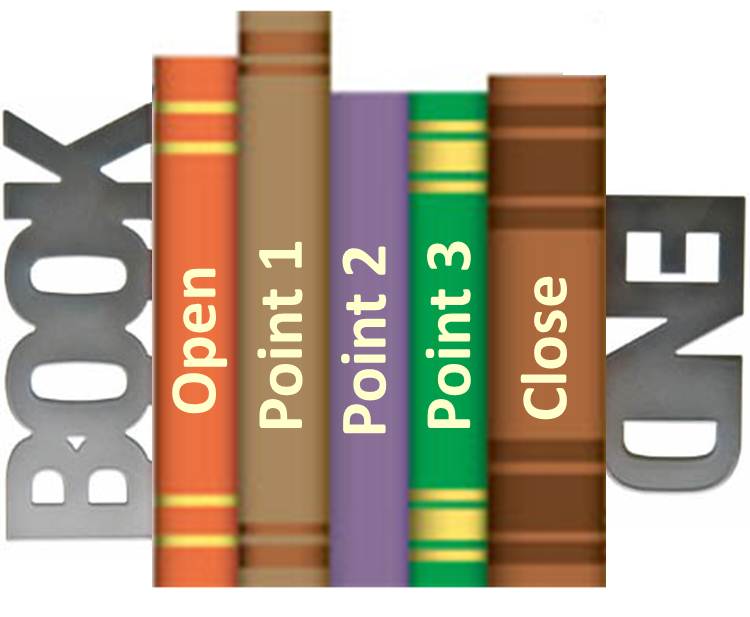Bookends are designed to “buttress, or to support an upright row of books.” Usually, bookends also are a matched, mirror image set, providing visual balance. Bookending your speech means that your speech introduction and conclusion support your speech in a way that provides balance. You “close the circle” for your audience, wrapping up your speech in a neat package.
Here are 5 ways you can bookend a speech:
- End by referencing your opening. Refer back to what you started with (movie, words, quote).
- Contrast concepts. Like mirror-image bookends, your concluding words can contrast with your opening words.
- Ask a question/answer a question. Open with a question. Answer the question at the end.
- Use the same visual. Use the same PowerPoint slide or the same prop.
Example:
Opening: I held up a photograph of an actor portraying Frankenstein’s Creature and said, “Frankenstein’s Creature is a well-known image in popular culture—a grotesque monster—staggering and grunting like a simpleton. However, that is a gross misrepresentation of creature as originally created.”
Closing: I held up the same photograph and said, “Frankenstein’s creature was no simpleton. I leave you with the question–Who really is the monster in this story? The creature, its creator, or society?”
5. Story. This is my favorite bookending method. Start your speech with a story, but cut it off at the climax. Close with the finish to the story. This approach also keeps your audience’s attention. People want to know how the story ends! Just remember that the story has to be relevant to your speech content. You can even weave the story throughout your speech.
Longer example (for a speech about dealing with difficult people):
Opening: I handed the old woman the Arby’s bag. She peered into it. “But I asked for a Big Roast Beef Sandwich!”
“It IS the Big Roast Beef Sandwich.”
The old woman scowled and held up the sandwich for inspection. “But I wanted the really big one. This is puny!”
“Oh. . . .The choices were Big, Bigger and Biggest. I just got what you asked for. You said you wanted a Big Roast Beef Sandwich.”
“But, that’s not what I MEANT!”
I was frustrated. The old woman was cranky. She was demanding. She was . . . my mother.
Middle: I continue the story when I talk about having empathy with “difficult people.” I reveal that my mother was struggling with a terminal illness. I make the point about “listening from your heart.”
Ending: I finish the story about my mom by relating our last conversation, the day before she died, reinforcing the theme of “listening from your heart.” The speech ends with a variation on a quote from the book The Little Prince and an inspirational call to action:
As I walked out the door, I heard her voice, almost inaudible:
“Di?”
“Yes, Mom.”
“I love you, Di.”
That was what was unfinished. The words of love. Those were the last words she said to me. She died the next day.
My mother listened with her heart and heard what I didn’t say. What I didn’t even know I needed to hear. They were the words in my heart that she heard with her heart. They were a gift. She was a gift.
In the book, The Little Prince, one of the characters says that
It is only with the heart that one can see rightly; what is essential is invisible to the eye.
I might change that to be:
It is only with the heart that one can hear rightly; what is essential is inaudible to the ear.
Listen from your heart and as you face conflict this year, and you will, try to look for the growth opportunity. Every conflict, every difficult person, comes with a gift, if you look hard enough for it.
Give your audience the gift of bookending your speech!

